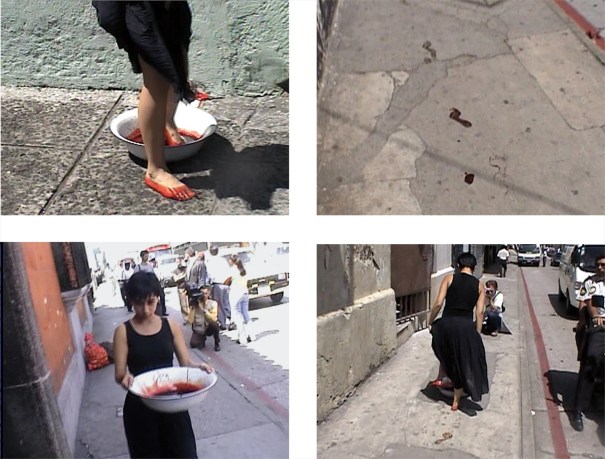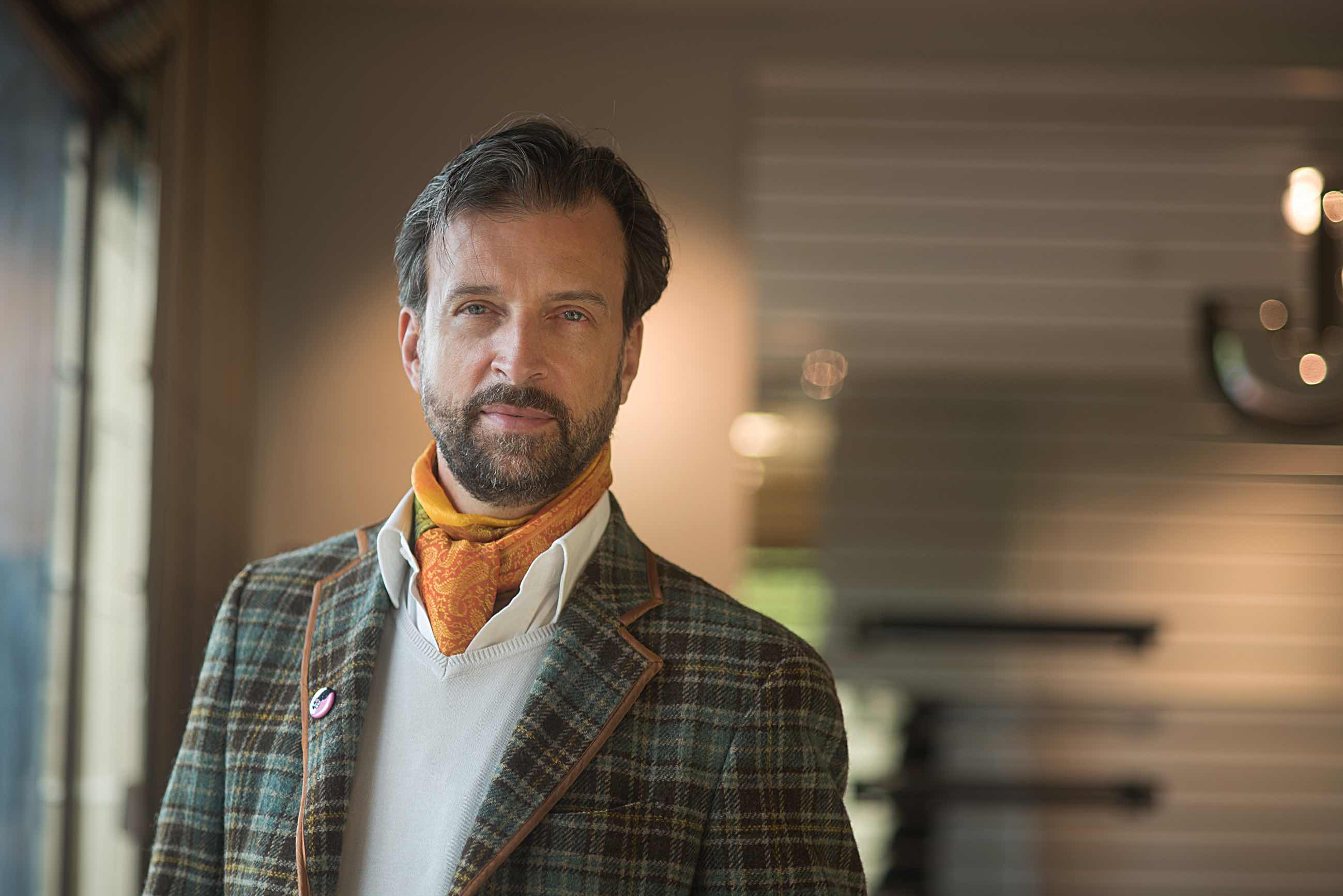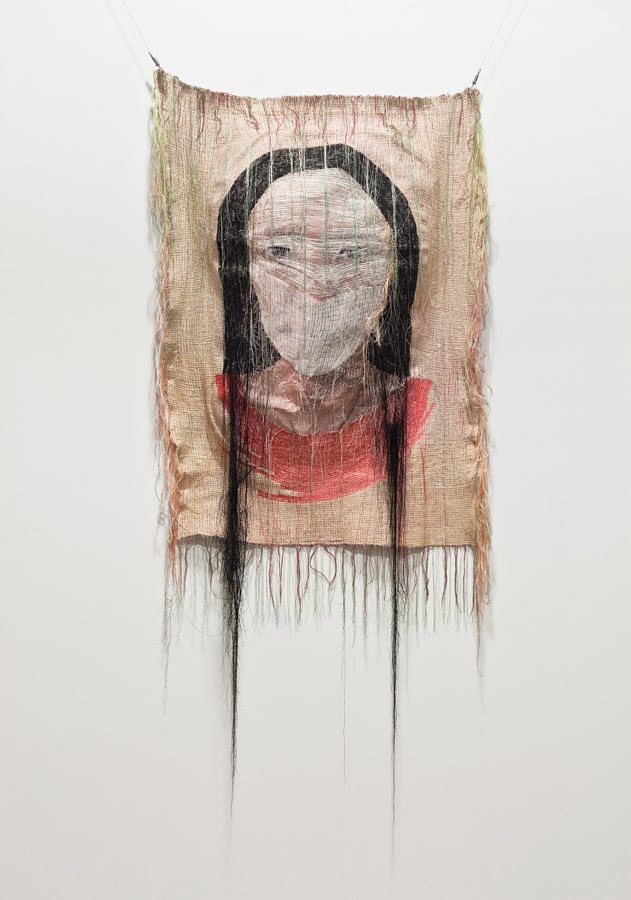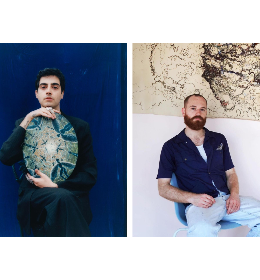Montpellier was the city chosen by the organisation Mécènes du Sud to host a selection of artworks from the Servais Family Collection (Brussels), a member of its artistic committee. In a different move to Japanese entrepreneur and collector Yasuharu Ishikawa (on show at MO.CO), Alain Servais is exhibiting 20 pieces hung chronologically — a kind of retrospective of collection by year of acquisition, from 1999 to 2018.
Daniela Ortiz: FDTD (Forcible Drugging To Deport) (2012/2016)
The first works, whether by Cindy Sherman, Andres Serrano or Bjarne Melgaard, represent in a sometimes provocative or subversive way the hitherto unseen permeability between the personal and the outside world. Makoto Aida takes on the spectrum of food shortages and the long-awaited technological responses. Social issues, meanwhile, appear in the works of Ariel Orozco and Mickalene Thomas. In the remainder of the exhibition, the pieces on show present a gradually more sombre view of the world, whether that be in the chilling work of Daniela Ortiz or that of Regina José Galindo.
This "chronological" exhibition of acquisitions by year was in fact, for me, a chance to become aware of the "subconscious" evolution of the collection. But rather than talking about the subversive and the provocative, I would say that an important interest of the collection in its beginnings was the relationship to the body, particularly in its social "acceptability". From there, an evolution towards social issues was only natural.

Regina José Galindo, quién puede borrar las huellas? (2003)
Around the time of your first acquisitions, were you thinking of a long-term strategy, a logic that would immediately give a sense to your collection? Were you more attracted to artists whose legitimacy had already been established in the art world?
There's a quote I like by the Financial Times' famous art critic Jackie Wullschlager, reviewing the original opening of the Palazzo Grassi in 2006: "Like all personal collections, the strength of Where Are We Going? lies in the projection through objects of one (rich and powerful) man’s vision of the world." In a more modest way, I hope that some people will be interested by my vision of the world as expressed through the pieces I choose. This personal expression is one of the 'raisons d'être' for the collection, through works by emerging artists right up to recognized 'masters'.
The way in which the plaques and the exhibition are laid out is very interesting. You are legitimately critical when you visit exhibitions in institutions that show the name of the gallery the work was bought from. How do we put a stop to this perverse logic breaking down the barrier between market and institutions?
I don't think it's possible to go back on this ongoing process of the 'privatisation' of culture — it's a direct consequence of public institutions all around the world, pulling out of its financing, sometimes progressively, sometimes brutally. As I wrote in 2014, the issue at hand at the moment is knowing how to preserve Art in the Shadow of the Art Market Industrialisation. A bit more transparency on the financing of art would at least help bring back vital ethics.

Alain Servais © Michel Loriaux (2017)
Faced with the difficulties of acquiring new artwork, public institutions are turning towards private collections. What is the impact on freedom and on institutions' submission to the art market?
The collector offers art works and the museum decides as independently as possible to exhibit them. Yes, the collector has the financial power on its side, but the art market understands very well that only the institutions' validation of an artist will guarantee him a spot in the history books and therefore a stronger base for future transactions.
Both institutions and collectors must move past the ideological barriers that often separate them. Only then will they be able to work together with the greatest possible transparency and ethics, towards the preservation of art as a reflection of the society in which it was created.

Yoo Ji Seun. Sew Me #12 (2018) Courtesy the artist & Collection Famille Servais.
« Chaosmos X - Se souvenir de demain » — June 27 - September 29.









